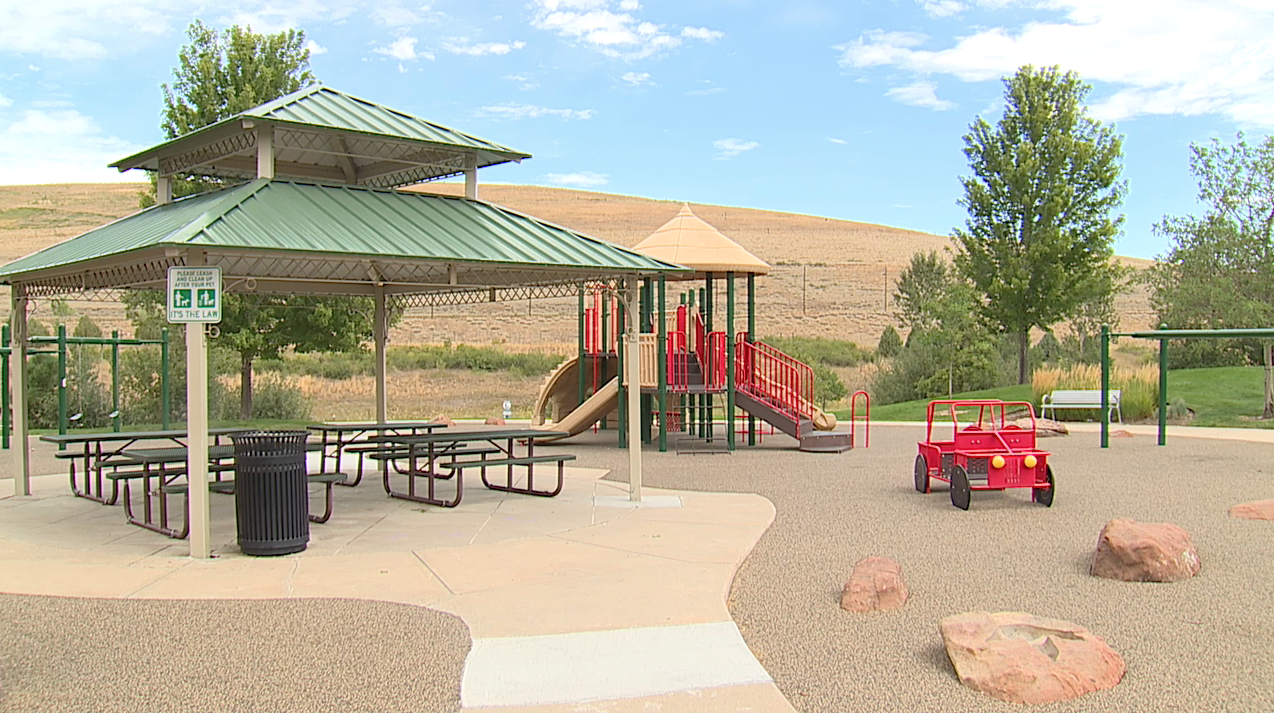ERIE, Colo. — As Colorado takes steps to reduce climate-warming pollution, the state hopes to finalize new rules by next year to tackle the methane released by our trash.
When it comes to air pollution, methane may not be as well-known as carbon dioxide. But it’s one of the most potent greenhouse gases, trapping about 80 times as much heat as carbon dioxide.
“Methane also has an immediate community impact,” said Tom Frankiewicz, an expert on landfill methane who leads the Rocky Mountain Institute’s Climate-Aligned Industries Program.
“Methane itself is a contributor to ground-level ozone or smog,” he said.
When landfills spew out methane, it’s often mixed with a “stew of emissions,” including hazardous air pollutants that can contribute to respiratory illnesses like asthma, Frankiewicz said.

Colorado’s Green House Gas Emissions Pollution Reduction Roadmap, first created in 2021 and updated earlier this year, identified trash as a major source.
“Reducing methane emissions from landfills, sewage plants and other sources, and enhancing waste reduction, recycling and diversion efforts is necessary, especially to reach emissions targets after 2030," the state report found.
The newest version of the roadmap tasks Colorado’s Department of Public Health and the Environment (CDPHE) to “develop and propose [Air Quality Control Commission] regulations directing enhanced monitoring, reporting and capture requirements at landfills across the state.”

Environment
Colorado updates 2021 plan to reduce emissions, improve air quality
Soon, Frankiewicz will join Colorado in brainstorming those new regulations. Later this month, CDPHE will bring together a group of experts. They’ll meet with officials from CDPHE’s Air Pollution Control Division from August through November. Then, they’ll present recommendations to the Air Quality Control Commission in early 2025.
Their meetings will be open for anyone to tune in. To join the Zoom meetings, you must register in advance using the links below:
- Aug. 27, 2024 11 a.m.-1 p.m.
- Sept. 10, 2024 11 a.m.-1 p.m.
- Sept. 26, 2024 10 a.m.-12 p.m.
- Oct. 8, 2024 11 a.m.-1 p.m.
- Oct. 22, 2024 11 a.m.-1 p.m.
- Nov. 5, 2024 11 a.m.-1 p.m.
You can also send in comments by emailing climatechange@state.co.us with the subject line: “Landfill Methane Reduction.”
Frankiewicz, who used to work with the U.S. Environmental Protection Agency’s climate change division, said Colorado is one of the states leading the way for the United States to more closely regulate landfill pollution.
“The impacts and the benefits are both global and local,” he said. And the potential solutions combine “high-tech and tried-and-true practices.”
Drones, aircraft and satellites can detect giant plumes of methane with a view from the skies and even outer space, Frankiewicz said. At the landfills themselves, gas collection systems can capture methane and convert it into energy for power companies to use.
“But that's only half of the solution,” Frankiewicz said. The main solution depends on keeping some trash out of landfills altogether.

Environment
Lawmakers greenlight statewide recycling program funded by packaging producers
“Once you set [your trash cans] out to be picked up, it's kind of out of sight and out of mind,” Frankiewicz said. But “methane is created when organic waste, things like yard waste, food waste, even paper and cardboard,” break down deep in landfills.
To stop that from happening, you can sort your trash into recycling and composting.
“You could actually compost those right in your backyard,” Frankiewicz said. “There's a role for everyone in this."

Commerce City
Challenges grow for a Colorado recycler helping the disenfranchised
But Coloradans, like Broomfield City Councilmember Laurie Anderson, recognize it’s not always so simple. Anderson said Broomfield is still working to make recycling available to all residents, and composting services are yet to come.
“We really need to be proactive as individuals, cutting down the waste,” she said.
However new local and state regulations should create incentives and cost-cutting measures to make those more environmentally-friendly waste disposal services cheaper and easier to access.
Anderson first started worrying about air pollution almost a decade ago, when an oil and gas operator decided to drill in her Broomfield neighborhood. But through her work with the nonprofit Moms Clean Air Force, she said she’s realized “we can't just look at one specific industry or one specific source. We need to look at all of them,” including landfills.

In some neighborhoods, the landfill pollution problem is more obvious — like in the Erie community directly across the street from the Front Range Landfill. Or in the predominantly Black or Hispanic neighborhoods in the Denver metro area, where solid municipal waste sites and superfund sites are more concentrated, according to mapping by the University of Colorado Boulder Environmental Center.
GreenLatinos, an environmental advocacy nonprofit, identified at least 10 solid waste and recycling facilities in north Denver and Commerce City alone, including the Sand Creek superfund site where a landfill operated alongside other industries and “contaminated soil, air, groundwater and surface water with hazardous chemicals.”

Environment
Could fracking in Aurora release toxic chemicals from nearby Superfund site?
Currently, Colorado has nearly 60 active landfills. Only 20 of them are required to report their methane emissions under federal reporting thresholds. But Anderson hopes Colorado’s new regulations will require reporting from all landfills.
“Even if you don't live across the street from it, you are still seeing the impacts,” Anderson said. “The more proactive we can be now, the less the burden is on the future, and that's why it really matters."

Homeless Union in Colorado Springs speaks out during cleanup operation
Multiple people experiencing homelessness talked on camera as the City of Colorado Springs executed a cleanup operation on Wednesday. The operation continues Thursday.




